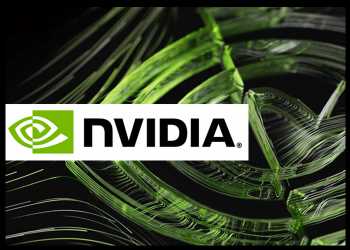Nvidia Unveils More Gen AI Products

Chipmaker Nvidia (NVDA) has been making headlines with its extensive new lineup of AI product launches and services. At the Computex conference in Taipei, NVIDIA founder and CEO Jensen Huang unveiled a range of cutting-edge equipment, software, and services.
Huang launched DGX GH200, a large-memory AI supercomputer for enterprises that need the ultimate in AI performance. It uses NVIDIA NVLink to combine up to 256 NVIDIA GH200 Grace Hopper Superchips into a single data-center-sized GPU. The DGX GH200 forms the pinnacle of hundreds of systems announced at the event.
The GH200 Superchip, which Huang said is now in full production, combines an energy-efficient NVIDIA Grace CPU with a high-performance NVIDIA H100 Tensor Core GPU in one superchip.
Huang said that tech giants like Google Cloud, Meta and Microsoft are among the first expected to gain access to the DGX GH200, which can be used as a blueprint for future hyperscale generative AI infrastructure.
Also, NVIDIA said it is working on its own massive AI supercomputer, NVIDIA Helios, coming online this year. It will use four DGX GH200 systems linked with NVIDIA Quantum-2 InfiniBand networking to supercharge data throughput for training large AI models.
Huang also launched NVIDIA Avatar Cloud Engine (ACE) for Games, a foundry service developers to build and deploy custom AI models for speech, conversation and animation. It equips non-playable characters conversational abilities so they can respond to questions with lifelike personalities that develop over time.
NVIDIA ACE for Games includes AI foundation models such as NVIDIA Riva to detect and transcribe the player’s speech. The text prompts NVIDIA NeMo to generate customized responses animated with NVIDIA Omniverse Audio2Face.
Huang also announced that more than 400 system configurations powered by NVIDIA’s newest Hopper, Grace, Ada Lovelace, and BlueField architectures will soon be available on the market. They aspire to take on the most complex challenges in AI, high speed computing and data science.
Huang unveiled NVIDIA MGX, a modular reference architecture for building accelerated servers, to meet the requirements of data centres of all sizes. It will be used by system makers to swiftly and affordably create more than a hundred alternative server configurations to suit a variety of AI, HPC, and NVIDIA Omniverse applications.
MGX lets manufacturers build CPU and accelerated servers using a common architecture and modular components. It supports NVIDIA’s full line of GPUs, CPUs, data processing units (DPUs) and network adapters as well as x86 and Arm processors across a variety of air- and liquid-cooled chassis.
QCT and Supermicro will be the first to market with MGX designs appearing in August. Supermicro’s ARS-221GL-NR system will employ the Grace CPU, while the S74G-2U system from QCT, also introduced at COMPUTEX, will use Grace Hopper.
ASRock Rack, ASUS, GIGABYTE and Pegatron will also use MGX to create next-generation accelerated computers.
Further, NVIDIA and SoftBank Corp. are working on a pioneering platform for generative AI and 5G/6G applications that is based on the NVIDIA GH200 Grace Hopper Superchip and which SoftBank plans to roll out at new, distributed AI data centers across Japan.
The platform will use the new NVIDIA MGX reference architecture with Arm Neoverse-based GH200 Superchips and is expected to improve performance, scalability and resource utilization of application workloads.
The data centers will use NVIDIA GH200 Superchips and NVIDIA BlueField-3 DPUs in modular MGX systems as well as NVIDIA Spectrum Ethernet switches to deliver the highly precise timing the 5G protocol requires.
Separately, Nvidia has teamed up with WPP on creating a content engine that uses AI and NVIDIA Omniverse to help creative teams produce high-quality commercial content at scale, more quickly, and with more brand consistency.
Huang also unveiled NVIDIA Spectrum-X, a networking platform purpose-built to improve the performance and efficiency of Ethernet-based AI clouds. It combines Spectrum-4 Ethernet switches with BlueField-3 DPUs and software to deliver 1.7x gains in AI performance and power efficiency over traditional Ethernet fabrics.
NVIDIA Spectrum-X, Spectrum-4 switches and BlueField-3 DPUs are available now from system makers including Dell Technologies, Lenovo and Supermicro.
Source: Read Full Article
